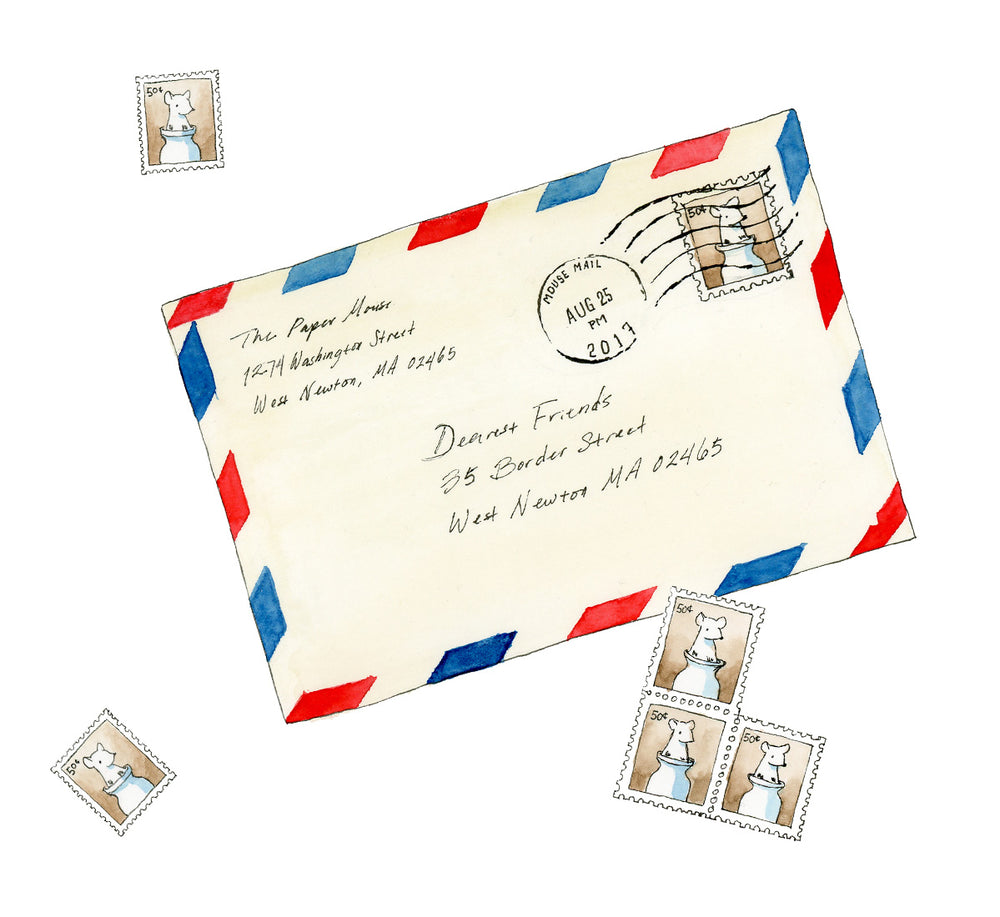Keeping a Gratitude Journal
As the end of the year approaches, and as our staff has started to reflect on 2023 and look ahead to the new year, we’ve been thinking a lot about gratitude—for our wonderful customers, the community of stationery-lovers we’re part of, our lovely sales reps and vendors and delivery folks, and the whole ecosystem that lets us do what we love to do. And it’s made us think about the idea of practicing gratitude as an active habit—specifically, gratitude journaling.
Since New Year’s is the traditional time for habit forming, we thought we’d talk today about keeping a gratitude journal. Gratitude journaling has gained popularity in recent years as a way to help us actively notice the good things in our lives from day to day. We humans are primed to focus on the negative, and seeking out the positive can help us shift our perspective and take energy from what we already have.
All this can sound a bit Pollyannaish on the surface, of course—bad things do happen in our lives, and gratitude journaling won’t prevent us from feeling sorrow, anger, frustration, or boredom. But in truth, just as we all sometimes ruminate on a frustrating encounter and spiral into more frustration, we’re equally capable of dwelling on positive feelings and spiraling the other way. It might feel a little forced at first, but as we learn to dig deeper, gratitude journaling can be a powerful exercise to reframe our outlook on life.
How to Keep a Gratitude Journal
So how does gratitude journaling work? The basic idea is to write down a few things every day that you felt grateful for. These don’t have to be big things, or things that you feel like you should be grateful for (“my health, my kids, my home”), although by all means you can include these. Instead, look for moments throughout the day that give you a feeling of happiness or appreciation, no matter how small.
The most helpful thing here is to get specific. So instead of writing, “I’m grateful for so-and-so,” you might write, “I’m grateful that so-and-so remembered my favorite brand of coffee.” This kind of detail helps us pay closer attention to the positive feelings we experience, and it jogs our memory later when we look back at our journals.
A lot of sources recommend listing three things every day, which can be a helpful structure—but in our opinion, quality is more important than quantity. If you had a bad day and you can only muster up a feeling of gratitude for that one small thing that went right, don’t force yourself to list things just for the sake of checking off a box, or the exercise will lose its meaning.
Some Tips for Success
As with any type of journaling, gratitude journaling is an extremely personal exercise, so what works for you might look different from what works for someone else. You can play around with journaling in different places, at different times of day, and in different formats until you find something that feels right. Here are a couple of considerations as you get started.
- Try to make it a regular habit. Part of the benefit of this practice is that it can help you notice positive things in your daily life and relationships. The more you make it a part of your routine, the more it will shape your perspective. You can write in your journal at a set time, like at the end of the day or first thing in the morning, or you can also add things to your journal throughout the day as they come to you. If you have trouble keeping up with it, try setting a daily reminder for a time when you know you can take a couple of minutes to yourself.
- Take notes. If you have trouble recalling things you were grateful for when the time comes to write in your journal, try keeping notes on your phone or a scrap of paper, then take the time to reflect on them later as you write them down. This has the added benefit of helping you pay closer attention to your gratitude throughout the day.
- Personalize it. If you love journaling and describing things in detail, then feel free to write at length about the things you’re grateful for. If you don’t, then keep it short—a sentence is all you need. Your journal can also include memorabilia or drawings to jog your memory if that suits your habits and personality. Just stay focused on making this journal a tool to serve your needs.
- Keep moving forward. As with any type of regular habit, if you miss a day or you have trouble thinking of things one day, don’t be hard on yourself. Let the day go and renew the habit with a fresh start the next day. Some days it’s harder than others to genuinely feel gratitude—but the more you practice, the easier it gets.
- Take time to look back. At the end of the week or the month, take a few minutes to flip back through your journal and reflect on some of the things you’ve felt grateful for. It’s a wonderful way to remind yourself of the good things in your life, and you may even notice patterns of things you value most.
Choosing a Journal
It’s easy enough to reflect on your gratitudes in your head, but with this exercise, it’s important to write it down. A written record helps you remember, gives you something to reflect on later, and gives the act of noticing your gratitude weight and importance.
A gratitude journal can be small and compact, especially if you’re only jotting down a couple of sentences. If you already have a journal or a planner, you can incorporate this practice into your existing notebook. You can even keep it digitally on your computer or phone. (Though we find it more meditative to write this one by hand, especially if you’re writing it while winding down at the end of the day.)
If you’re looking for a new notebook to use, consider the following options.
- Compact, pocket-size notebooks (something A6 or smaller) are perfect for writing a few lines a day. So is Leuchtturm’s Some Lines a Day 5-year journal.
- Planners make excellent gratitude journals: they come with a ready-made structure, and you can fill in each day of the year with gratitudes instead of to-dos. A daily or weekly planner will give you enough space to write down what you’re grateful for (and if you’re starting this habit in the new year, a dated planner is a perfect canvas).
- If you already use a Traveler's Notebook, you can easily add a refill for your daily gratitudes. Same with Hobonichi—incorporate it into your daily pages, or add a slim pamphlet-style notebook to your cover for gratitude journaling.
Do you keep a gratitude journal? Have you found that it has changed your daily mood or perspective? What journaling practices work best for you? Let us know in the comments below!




I was just going to send a message similar to Linda’s. I am so happy you are in the neighborhood. (even though I live in Needham!)
I’m grateful to the Paper Mouse, where I always feel happy and my spirits are lifted. ❤️
Leave a comment